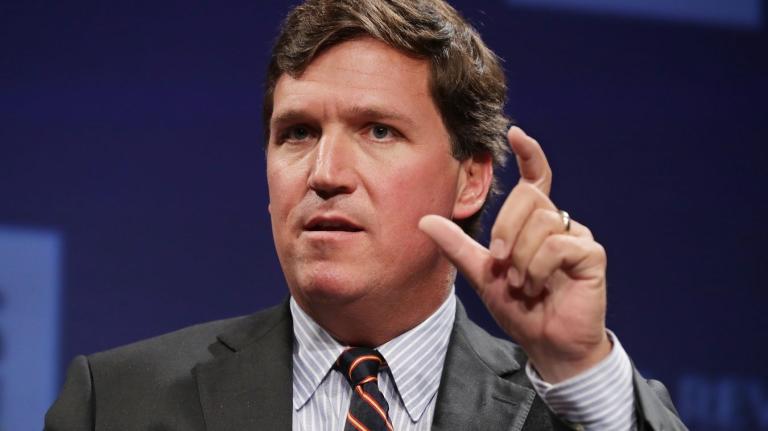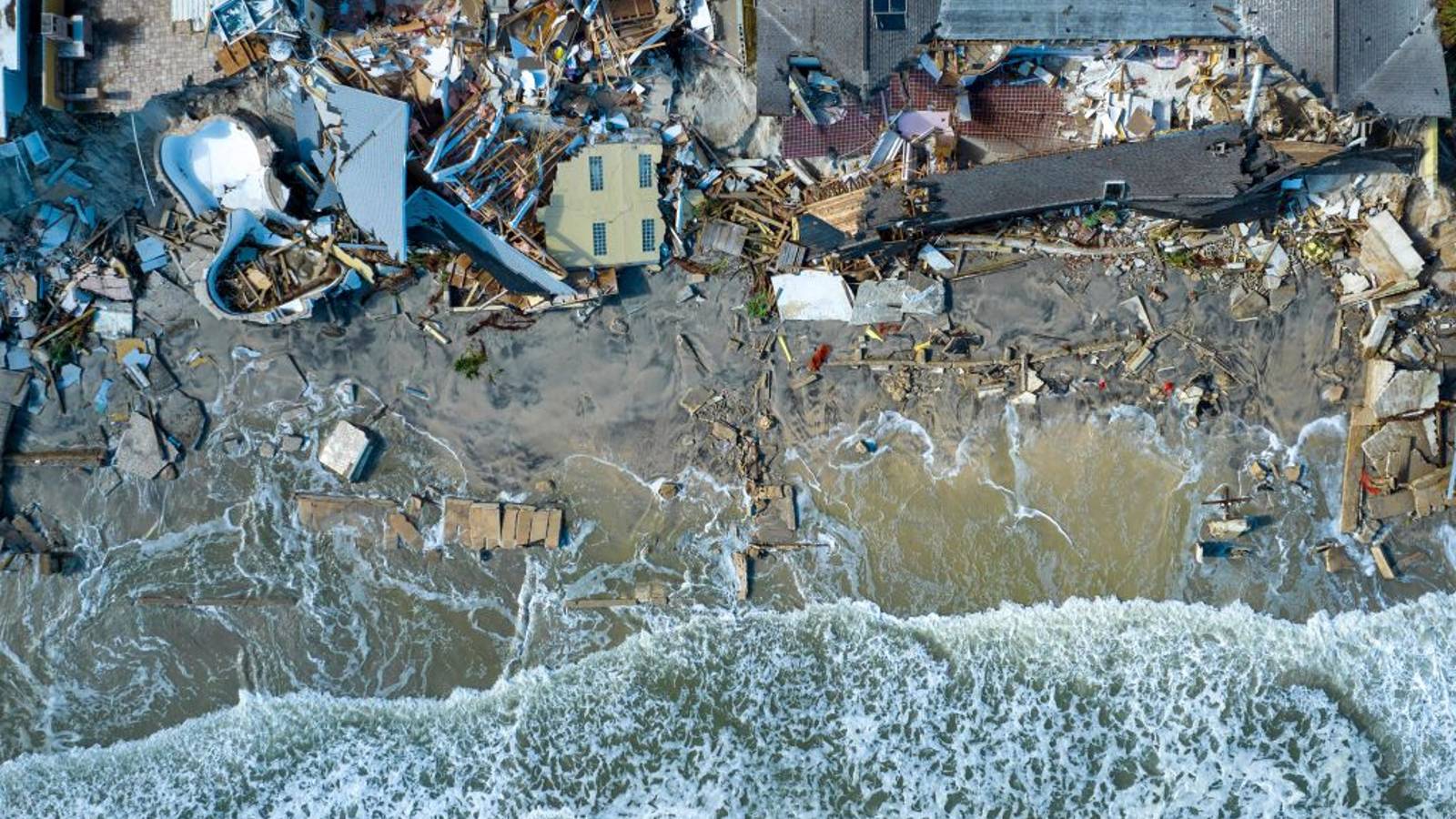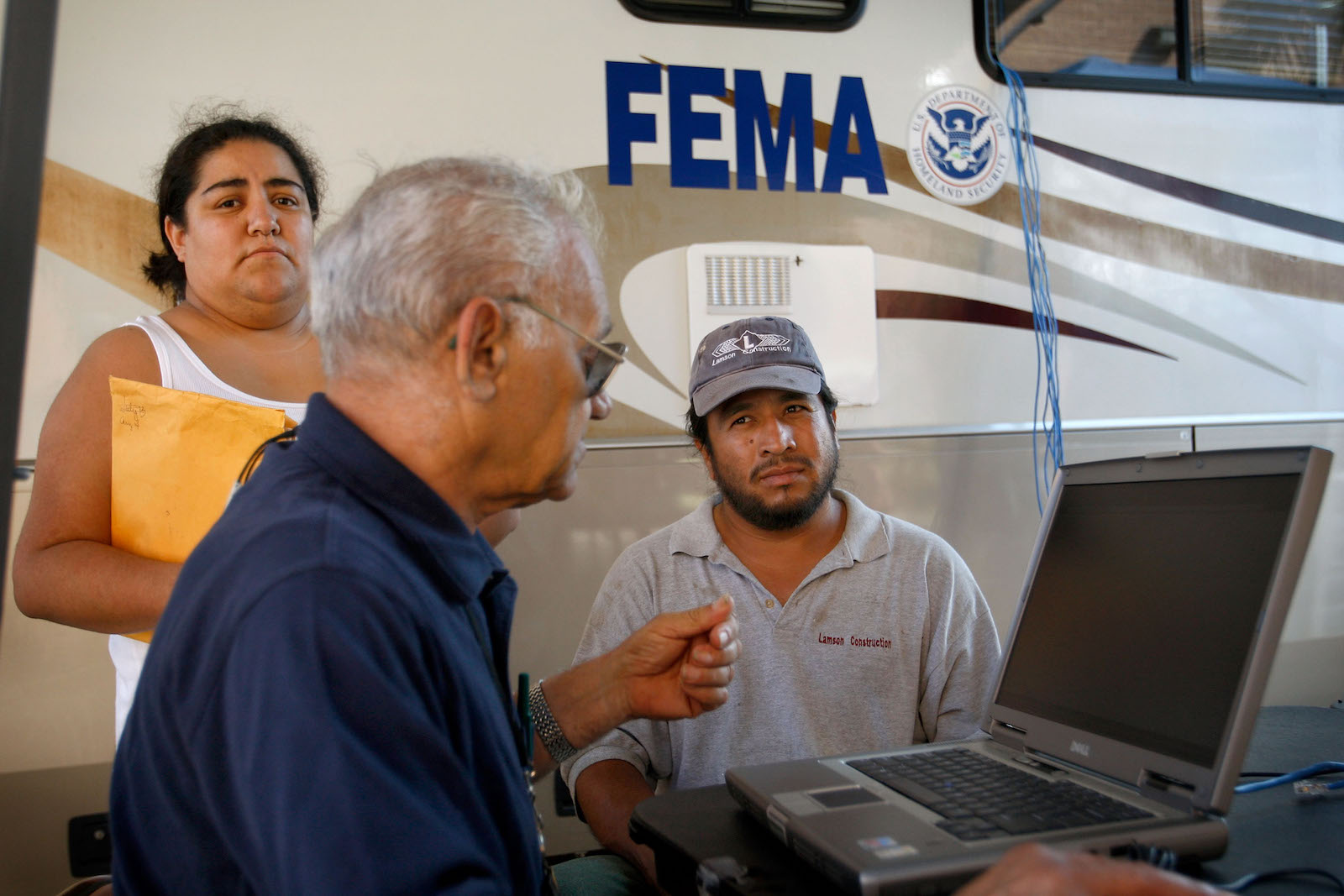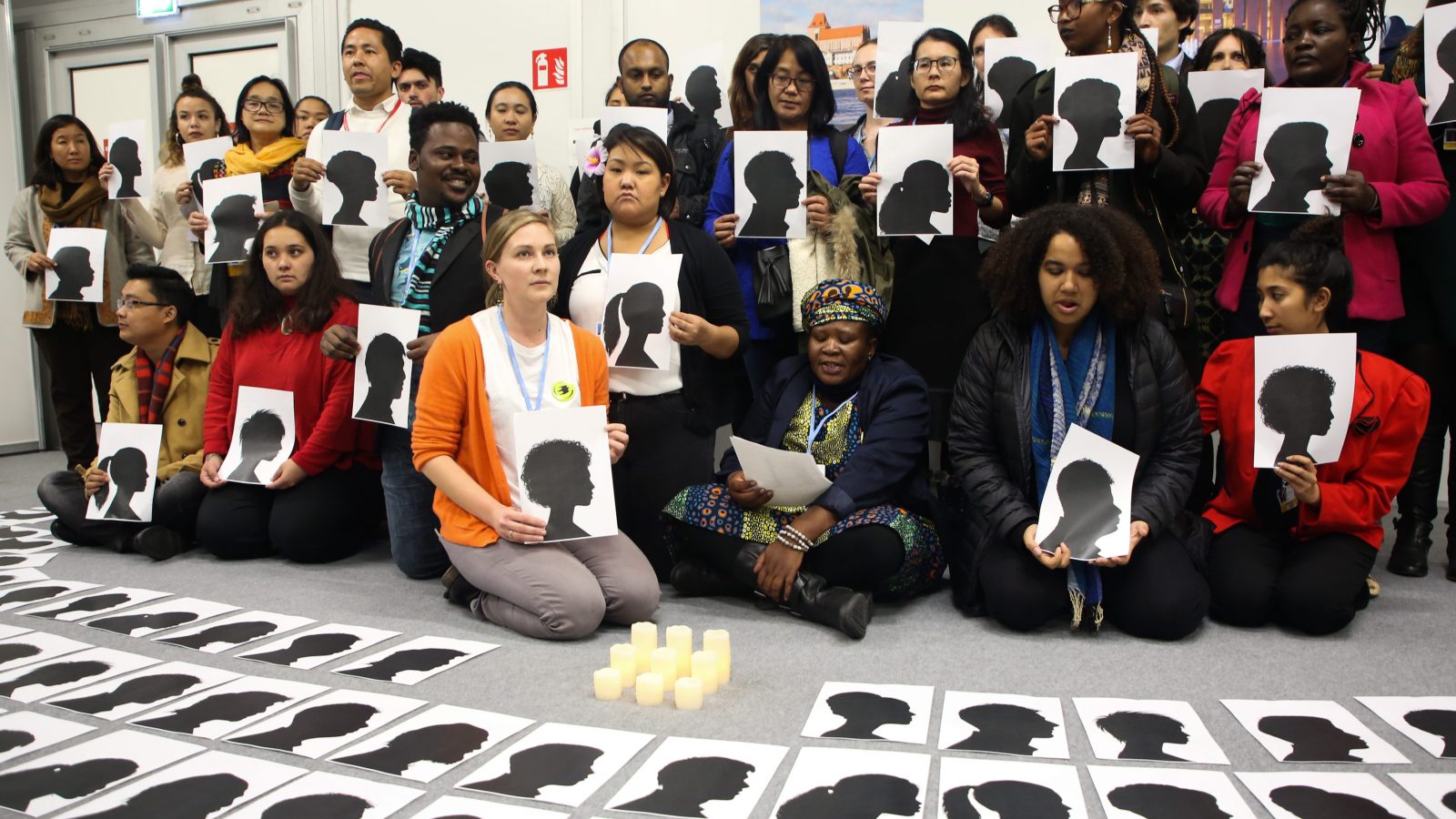This story was published in partnership with HuffPost.
Stewart Rhodes, the infamous leader of the anti-government Oath Keeper militia, was standing on a street in Conroe, Texas, a city about 40 miles north of Houston. The sky was clear blue, but remnants of darker days were everywhere. Residents were shoveling up splintered lumber and debris. A boy holding a broom was halfheartedly scooping lawn scraps into a garbage bag a few feet away from where Rhodes was conducting an on-camera interview.
A Category 4 hurricane named Harvey had just dumped feet, not inches, of water on the state, sparking one of the most expensive disasters in United States history. The scale of the damage was so vast that the then-director of the Federal Emergency Management Agency, or FEMA, put out a request for volunteers. “We need citizens to be involved,” he said on August 28, 2017, a few days after the storm struck Texas. The Oath Keepers answered the call.
Rhodes was wearing an Oath Keepers cap and T-shirt. He was there with another Oath Keeper, the organization’s Southeast regional assistant coordinator, Alex Oakes. The men were interviewing Beau Sullivan, a Conroe local who had been organizing hurricane relief efforts after the storm.
“Thank you, gentlemen, for coming out here,” Sullivan said, shaking Rhodes’ and Oakes’ hands. “You know, normally y’all gotta be a little more brass tacks, but y’all come out here with a message of love this time, and camaraderie, and I really appreciate that. That’s what’s needed now in this rebuilding effort.”
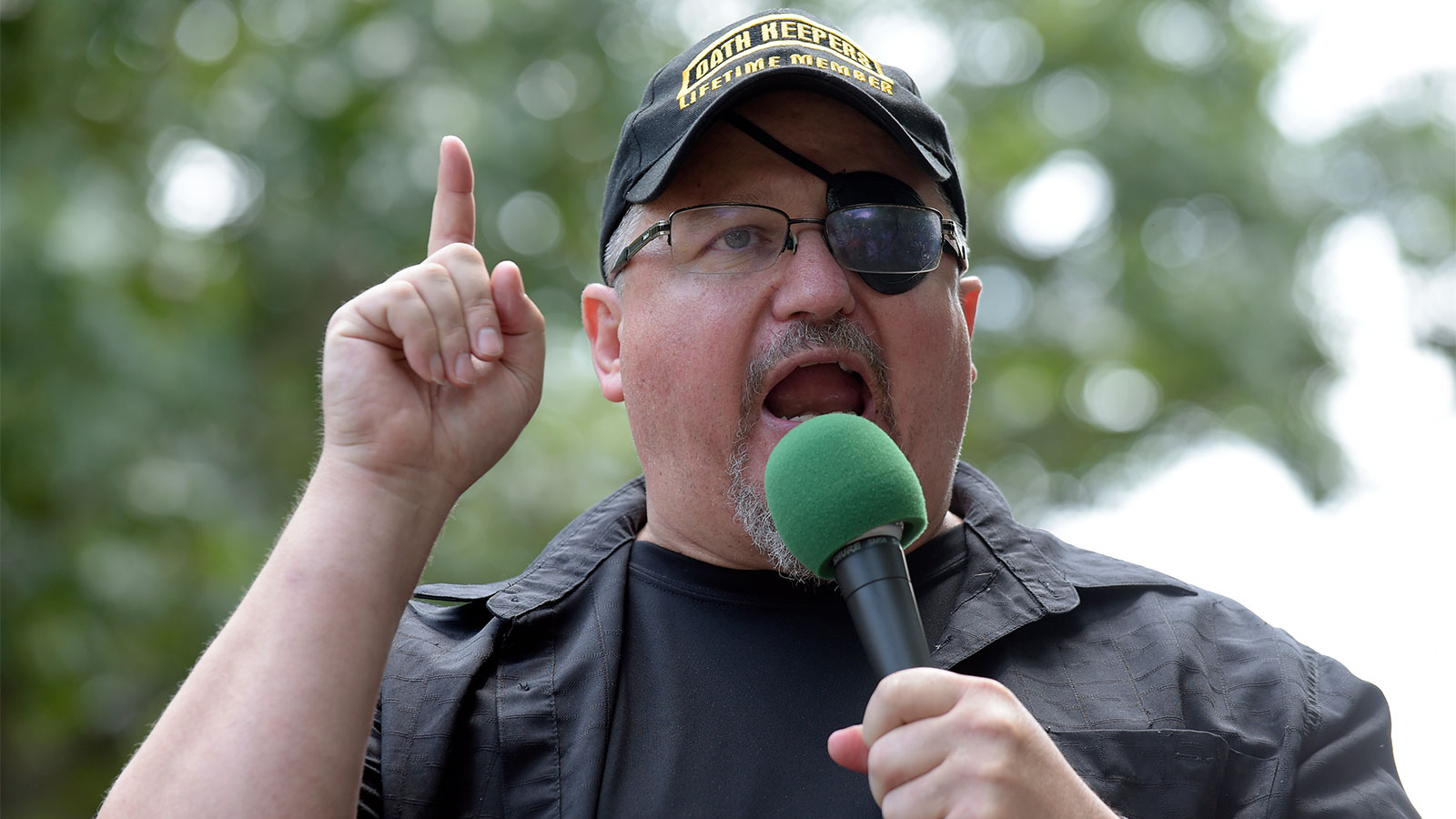
The exchange, captured on video and disseminated by the Oath Keepers on AltCensored, a right-wing alternative to YouTube, neatly distills why a group mainly preoccupied with uncovering made-up evidence of government tyranny might participate in hurricane relief efforts: It wins people over.
For nearly a decade, the Oath Keepers — which formed in 2009 in the wake of Barack Obama’s election to the presidency — have responded to disasters like hurricanes and floods by administering rescue operations, serving hot meals, and doing construction work. Disasters provide the Oath Keepers with opportunities to fundraise and gain the trust of people who might not otherwise be sympathetic to their anti-government cause. By arriving to crisis zones before federal agencies do, the Oath Keepers take advantage of bureaucratic weaknesses, holding a hand out to people in desperate circumstances.
This all serves to reinforce the militia members’ conviction that the government is fallible, negligent, and not to be trusted. And every time a new person sees the Oath Keepers as the helpers who respond when the government does not, it helps build the group’s fledgling brand.
The group has been in disarray since some of its leaders and most active members, including Rhodes, were arrested, tried, and convicted for their participation in the January 6 attack on the U.S. Capitol in 2021. Facing public backlash and social media bans, the Oath Keepers have retreated from the public sphere. For a time, they took down their website and stopped gathering in public. But the retreat has been short-lived. “Militia groups are finding some footing again,” said Hampton Stall, a research specialist at Princeton University who runs a watchdog site called MilitiaWatch. “2023 will be the year they start to reactivate.”
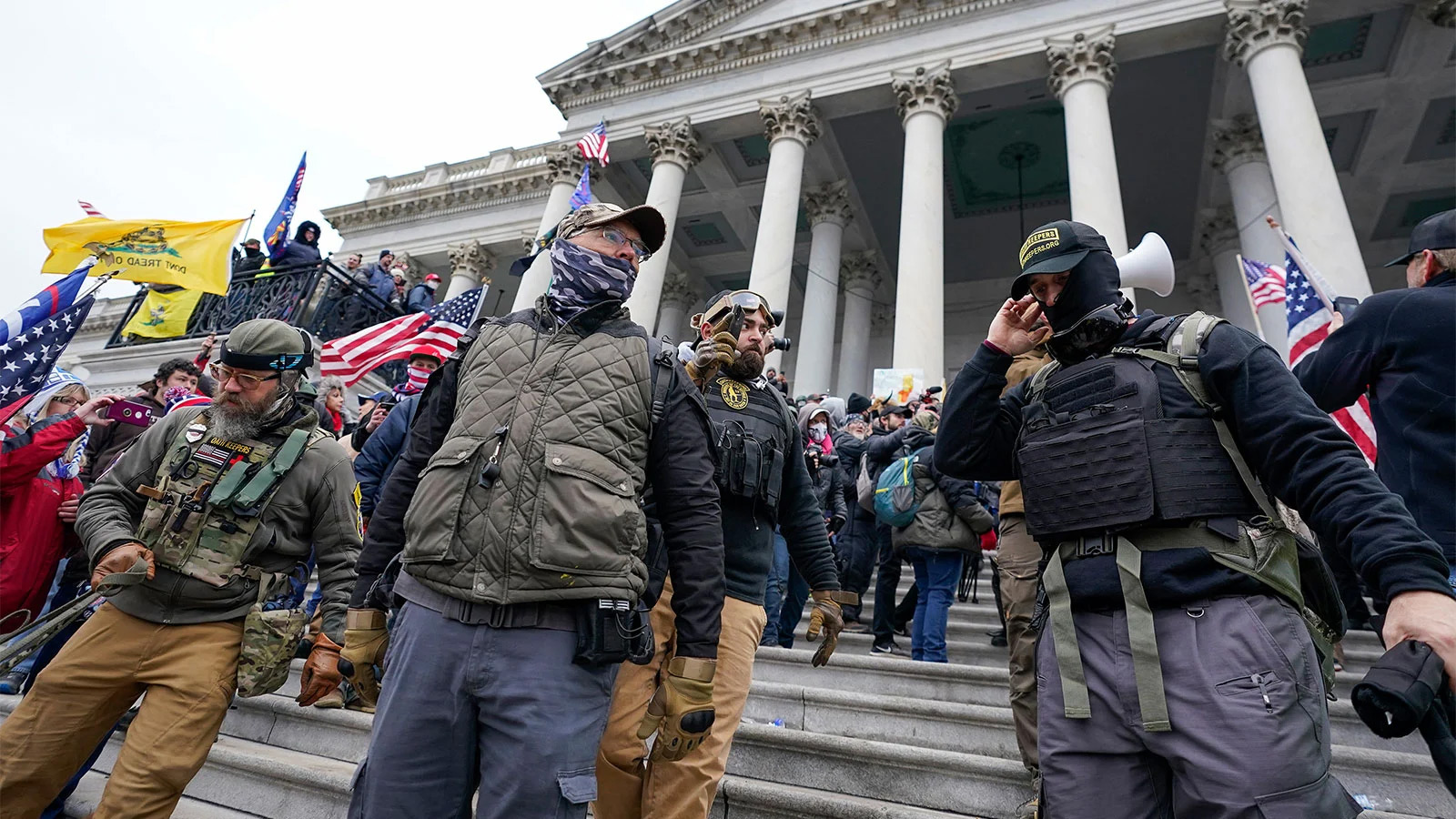
The first phase of an Oath Keepers remobilization is taking place in Chino Valley, Arizona. A man named Jim Arroyo, the former state vice president for the Arizona Oath Keepers chapter — the group’s largest state contingent to date — is on a mission to rebrand his chapter as a disaster assistance organization. His group, which he has registered as a 501(c)(3) nonprofit, is called the Yavapai County Preparedness Team, named after the county it’s based in. Arroyo is fond of calling the outfit, known as YCPT, a “nonviolent, apolitical, nonpartisan” organization.
“Our main issue is disaster preparedness,” he told Grist, an assertion local officials and others in Arizona have taken at face value. But that’s not the full story. The fringe group is trying to ride the coattails of disaster preparation and relief work into the mainstream, experts told Grist. Its success thus far hints at a frightening post-disaster outcome in a warming world: What happens if the government fails to show up and communities start to rely on the extremists next door?
Rhodes founded the Oath Keepers on the premise that a violent clash between American citizens and the United States government wasn’t just possible, it was inevitable. Rhodes subscribes to the far-fetched notion that the government is conspiring to strip its citizens of their rights and force them to participate in a “new world order” defined by a “tyrannical, globalist, and socialist one-world government.” Fear of government tyranny isn’t a new concept; it’s one of the tenets upon which this nation was founded.
Anti-government militias are a key part of the so-called patriot movement, a loose coalition of nationalistic and often violent far-right groups. The Oath Keepers recruit current and former members of the military, first responders, and law enforcement. Like other sects of the patriot movement, the Oath Keepers are overwhelmingly white, but otherwise they look and act differently than many of their allies.
“They live much more on the side of the spectrum that wants mainstream political legitimacy,” Sam Jackson, a University of Albany professor and the author of Oath Keepers: Patriotism and the Edge of Violence in a Right-Wing Antigovernment Group, told Grist. “One of the ways that Oath Keepers has done this is by trying to portray itself as a civic organization.”
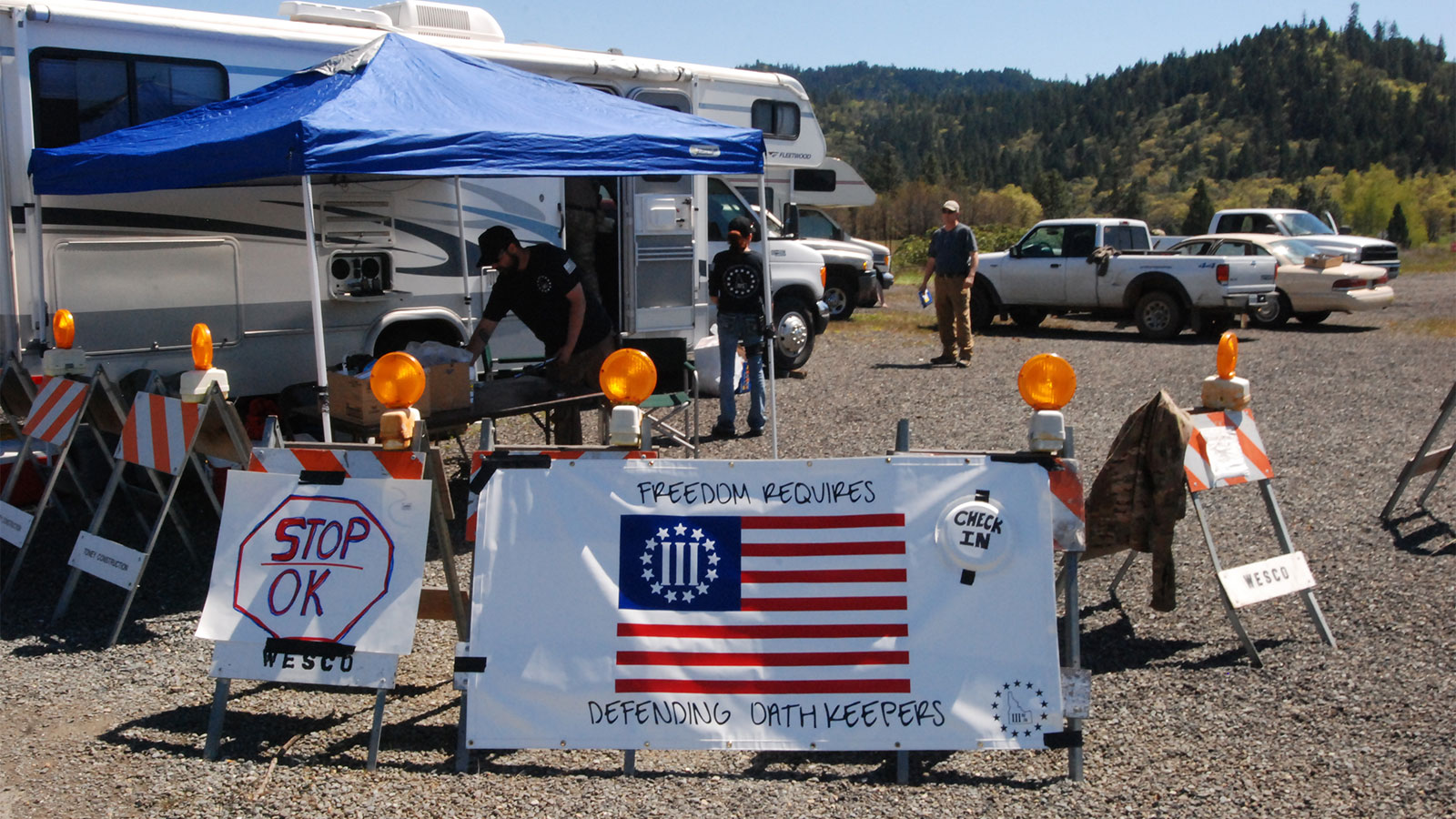
In 2013, Rhodes launched a program aimed at preparing communities for a natural disaster, a civil war, or anything in between. He originally said the program — a national network of community groups akin to neighborhood watches — was intended to create “civilization preservation teams.” He soon gave them a far more innocuous-sounding new name: “community preparedness teams,” or CPTs. CPTs provide volunteers with medical, disaster, and fire safety training. As the Oath Keepers grew, changed, and increasingly made themselves known in the public sphere, the CPT program remained a relative constant — something “the group seems to view as core to its identity,” Jackson wrote in his book.
The CPTs kept their eye on events with potential for conflict with government agencies. In 2014, they responded to Nevada rancher Cliven Bundy’s call to arms, after he refused to pay federal land management agencies millions of dollars in required fees to graze his herd of cattle on public land. They defended a gold mine from the Bureau of Land Management in Oregon in 2015. They were present that same year in Ferguson, Missouri, providing security, according to the group, for business owners during widespread protests on the anniversary of the death of Michael Brown, an unarmed Black teenager who was killed by police in 2014. And they provided relief in Conroe after Hurricane Harvey made landfall in 2017.
That year saw the dawn of a new era for FEMA. Harvey and two other hurricanes called Irma and Maria made landfall on U.S. soil in the same 30-day period, claiming thousands of lives, causing widespread destruction, and generating hundreds of billions of dollars in cumulative costs. The back-to-back disasters made it exceedingly clear that the federal government is unprepared for the consequences of climate change — more intense hurricanes, heavier floods, rising sea levels.
Despite years of abnormal weather events that have laid its shortcomings bare, FEMA still doesn’t have the personnel or the budget it needs to ready Americans for disasters or respond adequately when multiple disasters strike at the same time. Experts say that federal lawmakers, who decide how much funding FEMA gets every year, lack the foresight required to actually prepare for climate change. Instead, disaster management centers around response, which means FEMA is constantly playing a game of catch-up.
The agency’s shortcomings leave gaps for militias to step in. Teams of Oath Keepers moved into Texas, Florida, and Puerto Rico in the wake of the 2017 trio of hurricanes. They showed up again in Florida in 2018 after Hurricane Michael struck the state. Leaked Oath Keeper chats, shared with Grist by the nonprofit watchdog group Distributed Denial of Secrets, show that members of the group put out a call for volunteers following a damaging outbreak of tornadoes in Alabama, Georgia, Mississippi, and Tennessee in the spring of 2021.
It’s not just the Oath Keepers. Armed vigilantes reportedly set up roadblocks and interrogated people fleeing wildfires in Oregon in 2020; a different militia tried to recruit people affected by the Oak Fire in central California last summer. “Disaster relief in this country is pretty broken because of the way it often takes months to get federal funding activated,” Stall said. “There’s a long time during which groups can often get active.”
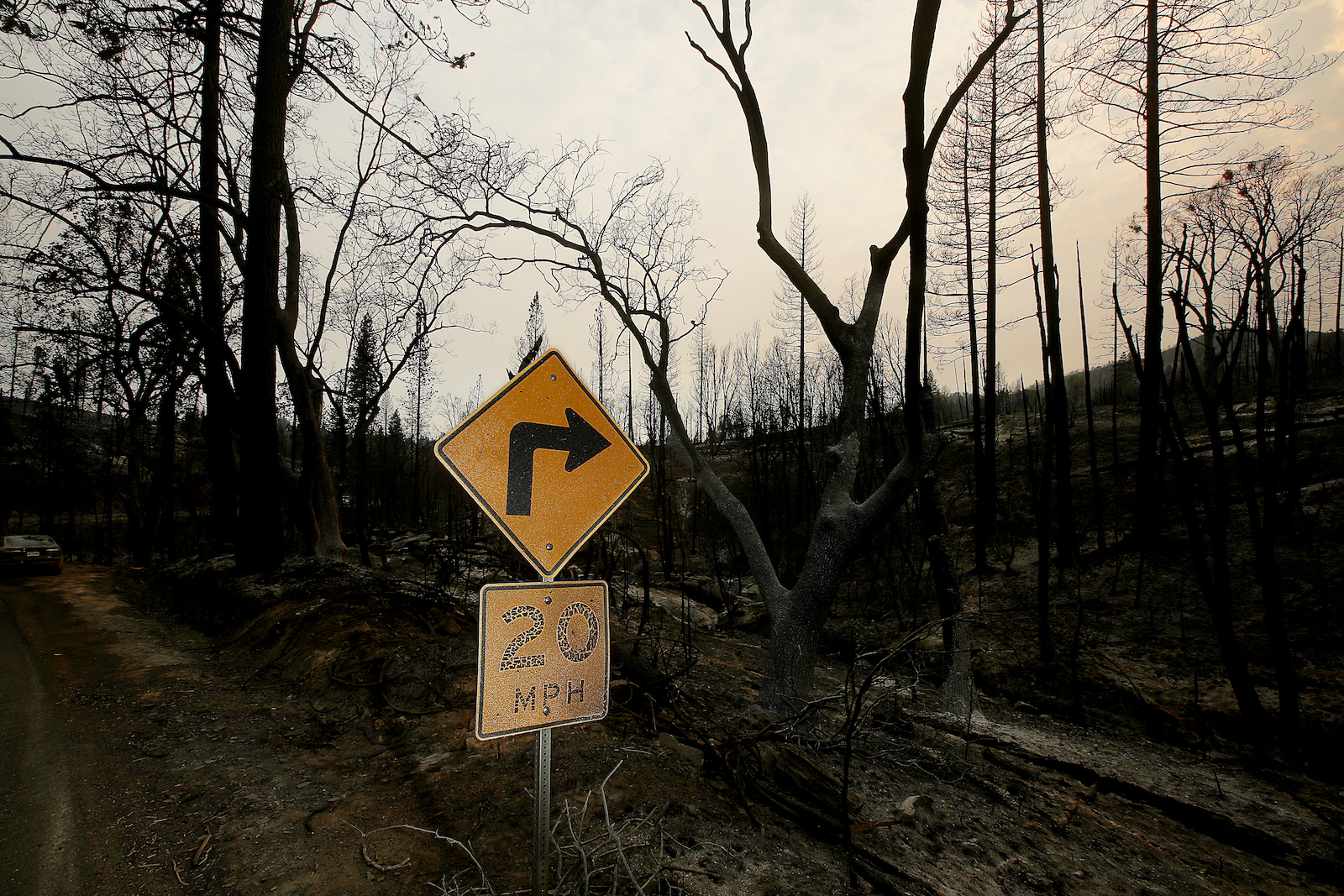
And FEMA’s large-scale efforts to help communities in the aftermath of disasters inadvertently provide these groups with fodder for their conspiracy theories. When a hurricane hits, FEMA goes to work building out a massive network of field camps, relief stations, and other physical infrastructure that makes the work of disaster aid possible. Where the unindoctrinated might see logistics at work, the far right sees a sinister plot unfolding.
“There’s a long-standing conspiracy theory among the far right that everything that FEMA does is dual use,” Jackson said. “It has this surface-level purpose of responding to emergencies and disasters and all that kind of stuff. But also it’s building up the infrastructure so that one day when martial law is declared, there are these huge detention camps and there are deployed resources to be used by troops who are enforcing martial law.”
Many Oath Keepers subscribe to that belief, but they’re not vocal about it. Publicly, Jackson said, they portray themselves as supplementing FEMA’s efforts and even working in tandem with the agency. It’s part and parcel of the group’s founding ethos — understand the system, work within the system, and be prepared to defeat the system when the time comes.
If there’s one thing Jim Arroyo, leader of the Yavapai County Preparedness Team, understands, it’s how the system works. The 62-year-old gunsmith trained as an army ranger in the early 1980s, regularly volunteers with the Chino Valley Police Department, and assists his county’s local emergency management program, in addition to serving as the Arizona chapter vice president for the Oath Keepers for several years starting in 2014. Arroyo insists that neither his organization nor the Oath Keepers qualify as militias, and he vehemently rejects accusations that the Oath Keepers are in any way anti-government.
“That’s completely stupid,” he told Grist. “We are the government.”
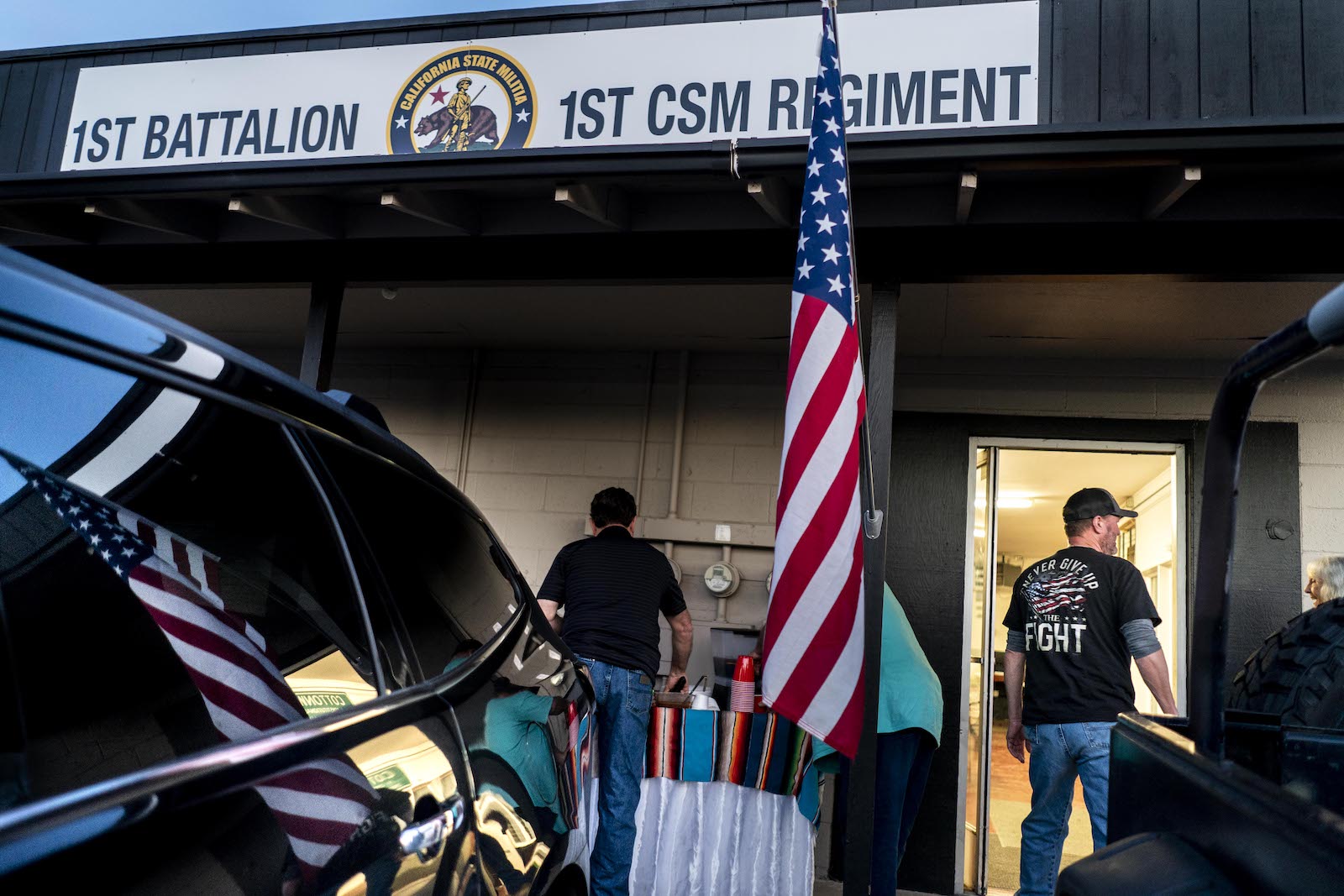
Grist reached Arroyo on his landline in mid-March. He answered questions with occasional coaching from his wife Janet, who helps him run YCPT. In 2022, as the groups that stormed the U.S. Capitol confronted mounting legal and social repercussions, Arroyo officially broke ties with Oath Keepers national. He says his chapter is no longer in contact with the larger organization or Stewart Rhodes. But he still puts up the Oath Keeper flag at meetings and sports branded Oath Keeper gear.
“We still believe in the mission of the Oath Keepers,” Arroyo said, though he admitted that his efforts to partner with local governments outside of Arizona since the Capitol insurrection have been difficult due to his association with the organization. For the time being, he’s focused on building YCPT into a national network. “At this stage of the game, our mission is to train individuals,” he said. He declined to say what he aims to do with the group in the future, but the YCPT website claims the group has outposts in 14 U.S. states and three countries — Canada, Panama, and the U.K.
Arroyo offers YCPT attendees training in person and via Zoom twice a month. He lectures in front of a large banner that lists some of the threats the group says it’s focused on mitigating: fires, floods, food shortages, and economic collapse, to name a few. Many of the trainings focus on skills that come in handy during natural disasters — like contacting people by radio in the event that internet and cellular networks break down, or administering CPR and other emergency medical procedures. Topics have also included how to prepare for electrical outages, plant a garden, and keep warm in freezing conditions.
But the group isn’t just preparing for hurricanes and floods; it’s getting ready for war. In fact, that’s the bulk of the “preparedness” work it’s doing. Though the YCPT website makes it seem like the organization is primarily focused on teaching participants basic survival skills, recordings of the group’s monthly general meetings make it clear that YCPT’s agenda goes far beyond those mainstream offerings. At every meeting, Arroyo invites a guest to give a lecture or offers one himself, an Oath Keeper cap perched on his graying head and a handgun holstered to his hip.
At one recent meeting, a self-described information warfare officer and retired Army lieutenant colonel named Steven Murray preached a potent cocktail of misinformation. “Trans, gay, transhumanist agendas” were infiltrating the public sphere. China had undermined every office in Arizona’s government, and the sovereignty of Yavapai County had been “transferred” to the Centers for Disease Control and Prevention, which will ultimately “usurp the constitution.” FEMA had built a “containment” camp in Arizona, he said. “That should bother everybody in this room.” Each point Murray made was aimed at inspiring action. “Our job now is to resist,” he said, “to outthink, outsmart, and out-act our enemy.”
The next guest, the head of YCPT’s security team, taught attendees how to build their own tripwires, decoys, and booby traps. One mechanism, a tripwire that makes a loud noise to scare off intruders, requires a shotgun blank, he said. “It doesn’t have to be a blank,” a member of the crowd shouted.
Arroyo later warned the group about the legal consequences of putting a live cartridge in a trip alarm. But he closed out the meeting with a warning about the “police state,” which he said controls elements within federal, state, and local law enforcement as well as the media, corporations, and the court system. Those entities, he claimed, are preparing to attack. “I’m getting prepared for the inevitable,” Arroyo said. “We’re already engaged in the preliminaries before we get ready to go full kinetic.”
Arroyo told Grist that YCPT’s goal isn’t to teach people how to participate in a civil war. “Face it,” Arroyo said, “the vast majority of our people here are in their 60s, 70s, and 80s. We are not teaching them to fight in a war. We’re teaching them how to survive it.”
YCPT has the idea “that there will be some eventual moment when they are going to need particular skills,” said Rachel Goldwasser, a research analyst at the Southern Poverty Law Center who studies the Oath Keepers and has kept track of YCPT meetings. “There’s going to come a day when the government is going to go, essentially, full tyrant.” According to Arroyo, that day isn’t too far off.
YCPT’s political arm, a group called the Lions of Liberty, staked out ballot dropboxes in Arizona last November as early voters submitted their ballots. Arroyo told Grist that he organized the surveillance effort in Yavapai County, and said “there is overlap” between the groups. “People who are Oath Keepers or people who come to the YCPT trainings and meetings also attend the Lions of Liberty meetings.” The unauthorized surveillance came to a halt after roughly a week when the League of Women Voters of Arizona sued the Lions of Liberty for violating the Voting Rights Act.
Arroyo told Grist that he believes that the world’s economic systems are on the verge of collapse, that unnamed attackers might disable U.S. power grids with an electromagnetic pulse, that the U.S. has already entered a civil war, and that the globe is in the first phase of a third world war. Unlike his guest speaker, Arroyo says he doesn’t believe that FEMA is currently planning to imprison Americans in its camps, though he told Grist he does think FEMA could overstep its authority at some point down the line.
“Governments all the time can do crazy things,” he said.
While Arroyo’s views may seem far out to the average American, it’s obvious there’s an audience for them in Arizona and beyond. Arroyo said that between 100 and 150 people regularly show up to his gatherings. Goldwasser and other experts who track these meetings confirmed they’re well attended. Republican candidates running for seats in Arizona’s House of Representatives, Senate, attorney general’s office, and Department of Education have spoken at YCPT meetings. In 2022, Eli Crane, a candidate for the U.S. House of Representatives, spoke at a meeting. He subsequently ousted the Democratic incumbent in the midterm elections. An Arizona state representative, Quang Nguyen, has been a guest speaker at least three times. Mitch Padilla, candidate for local justice of the peace, spoke at a YCPT meeting before winning his 2022 race. Multiple current and prospective county sheriffs have given speeches.
For attendees, the risks are minimal. Though YCPT meetings are fueled by conspiracy theories, the organization has a harmless name and isn’t bogged down by the controversy surrounding the national Oath Keepers organization. That may allow the group to expand its reach in coming years.
“There is a gap now and a vacuum where Oath Keepers was,” said Goldwasser, who thinks Arroyo will hoover up Oath Keepers who have been standing idly by as the national organization’s leadership has splintered apart.
Disasters are already chaotic. Adding in teams of armed volunteers, jacked up on conspiracy theories about the government, civil unrest, and global war, adds an unpredictable dimension to already complicated and flawed state and federal relief efforts. “The vast majority of Oath Keeper beliefs and activities are still embodied in YCPT,” Goldwasser said. “Even if Arroyo doesn’t agree with an all-out coup attempt, the things he might agree to that are dangerous, that are intimidating, that are potentially in conflict with the government, those still exist.”
Some well-established relief groups, like the Red Cross, might link up with the Yavapai County Preparedness Team without realizing it’s a spinoff of the Oath Keepers, Goldwasser said.
And then, of course, there’s the matter of who, exactly, these groups are targeting for disaster assistance.

It’s hard to say how these older, majority white veterans and other volunteers currently think about the communities they aim to provide disaster assistance to, but in the past, Jackson said, Oath Keeper relief missions have focused on helping predominantly white communities. “They’re focusing on the suburbs, and they’re seeing the inner city as a source of problems and threats that need to be patrolled rather than people that need help.” FEMA has faced persistent criticism for shortchanging minorities and low-income Americans in its relief efforts. If the Oath Keepers bring racist bias to their disaster recovery work, it could make disasters even more dangerous for communities of color.
Arroyo disputes the idea that his group discriminates. “We’ve got transgenders in our organization, we’ve got members of the LGBTQ community, we’ve had Democrats come in and participate in our training,” Arroyo said. “The narrative that the Oath Keepers are white nationalist, white supremacist, that’s a false statement.”
As the planet warms, more calamities will strike the U.S. and, if the recent past is any indication, create new opportunities for militias and other extremist groups to mobilize and recruit. But researchers have been examining productive counter-extremist messaging methods for decades now, and experts told Grist they see a few interventions that could limit militias’ power during natural disasters.
Brian Hughes, co-founder of the Polarization and Extremism Research and Innovation Lab at American University, said his group has had success using credible messengers — a trusted community group, a loved one, or an authority figure — to teach potential recruitment targets to avoid being manipulated by extremists. Those targets are people who are disillusioned with the “system” or simply have too much time on their hands. “We try to reach people as early in the radicalization process as possible and ideally even before it begins,” he said.
Hughes has had success experimenting with a technique called “pre-bunking,” a mix of media literacy and counter-propaganda education. The method teaches people how to recognize extremist recruitment tactics and reject them on sight. “You can say something like, ‘If somebody is telling you a story that sounds like they’re saying you need to stockpile guns because society is going to collapse, there’s a good chance this person is representing an extremist group or an extremist point of view,’” Hughes said. His lab’s research has shown that people who have been pre-bunked are less likely to find extremist messaging credible and are more likely to develop their own counterarguments against it.
States can also play a firmer role in curtailing extremist activity. Many states have laws on the books that prohibit private militias from operating, but most state attorneys general don’t enforce them. In fact, some states are trending in the opposite direction. Idaho lawmakers recently passed a law that repeals legislation prohibiting militias and paramilitary activity.
“The states seem reticent” to enforce anti-militia laws, “and some states don’t even know that they can utilize this,” Goldwasser said. “But it’s something that is absolutely necessary moving forward.”
Stall is particularly heartened by organizations that enlist retired law enforcement and veterans — the same groups targeted by the Oath Keepers — to do relief work while ditching the heavy dose of extremist ideology. Team Rubicon, a humanitarian organization headquartered in California, recruits veterans, first responders, and other volunteers to help communities prepare for and recover from disasters. The group has built out a network of 150,000 volunteers, half of whom are veterans, and conducted some 1,500 missions in its 13 years of operation. Art delaCruz, Team Rubicon’s CEO and a veteran himself, told Grist that the organization’s work in disaster zones helps make the transition from soldier to civilian easier for its volunteers.
“I like to say that military veterans and people who have retired out of law enforcement or fire departments, whatever it might be, you have muscles that you’ve built up over the years and you love to use them,” delaCruz said. “The ability to use those muscles in a manner that’s meaningful is really, really powerful.”
